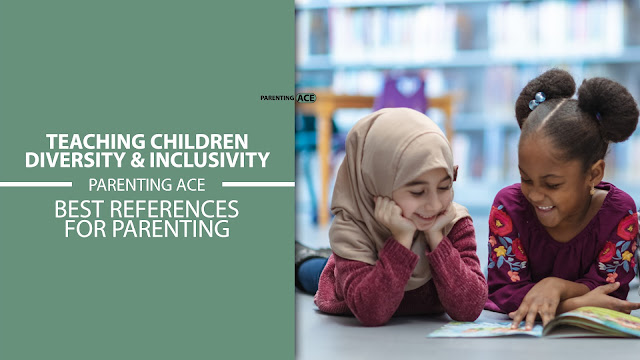Strategies for Teaching Children About Diversity and Inclusivity
In today's interconnected world, nurturing inclusive mindsets in children is paramount for building a future generation that celebrates diversity and fosters empathy. In this blog post, we delve into essential strategies aimed at guiding caregivers and educators in effectively teaching children about the beauty of diversity and the importance of inclusivity. From fostering early conversations to modeling inclusive behaviors and promoting cultural exchange, these strategies serve as pillars for cultivating a society where every individual feels valued and respected. Join us on this journey as we explore practical approaches to instilling these vital values in the hearts and minds of our children.
 |
| Teaching Children Diversity & Inclusivity |
What Are Some Strategies For Teaching Children About Diversity And Inclusivity?
In an increasingly diverse world, teaching children about diversity and inclusivity is crucial for fostering empathy, understanding, and acceptance. As caregivers and educators, we play a pivotal role in shaping children's perceptions and attitudes towards people from different backgrounds, cultures, and identities. By instilling these values early on, we equip children with the tools they need to become compassionate and respectful individuals in a multicultural society.
Strategies for Teaching Children About Diversity and Inclusivity
1. Start Early and Be Proactive
Begin conversations about diversity and inclusivity from an early age, even before children encounter differences in their daily lives. Use age-appropriate books, toys, and activities that celebrate diversity to introduce children to the concept of inclusivity in a positive and engaging way. Proactively create an environment that embraces diversity, where children feel comfortable asking questions and exploring different cultures and perspectives.
2. Lead by Example
Children learn by observing the behavior of adults around them. Model inclusive attitudes and behaviors in your interactions with others, whether it's showing respect for people of different races, religions, genders, or abilities. Demonstrate empathy and kindness towards individuals who may be marginalized or excluded, and openly challenge stereotypes and prejudices when they arise.
3. Encourage Critical Thinking and Reflection
Encourage children to think critically about stereotypes and biases they may encounter in media, books, or everyday life. Teach them to question assumptions and stereotypes by asking open-ended questions and fostering discussions about diversity and representation. Help children develop the skills to recognize and challenge unfair treatment or discrimination, both towards themselves and others.
4. Promote Cultural Exchange and Exposure
Expose children to a variety of cultures, traditions, and perspectives through multicultural activities, celebrations, and experiences. Encourage participation in cultural events, festivals, and community gatherings where children can interact with people from diverse backgrounds. Provide opportunities for children to learn about different languages, foods, arts, and customs, fostering a sense of curiosity and appreciation for cultural diversity.
5. Emphasize Empathy and Respect
Teach children the importance of empathy, kindness, and respect towards all individuals, regardless of their differences. Help them understand that everyone deserves to be treated with dignity and fairness, and that diversity enriches our communities and strengthens our collective identity. Encourage empathy by encouraging children to imagine themselves in someone else's shoes and consider how their actions impact others.
In conclusion, teaching children about diversity and inclusivity is a fundamental aspect of their social and emotional development. By implementing these strategies, we can empower children to embrace diversity, challenge prejudice, and foster a culture of inclusivity and acceptance. As caregivers and educators, we have the opportunity to shape a generation of compassionate and respectful individuals who celebrate the richness of human diversity in all its forms. Let us commit to nurturing a more inclusive world, one child at a time.



Comments
Post a Comment